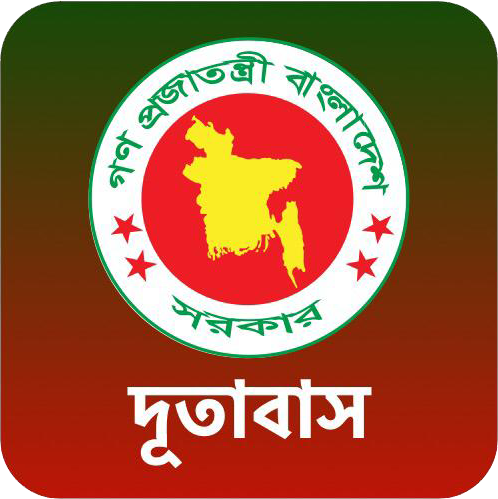Life and Culture
Bangladesh is a land of rich cultural diversity that evolved over the centuries through continued interactions among different social groups and travelers from around the world. The ancient land has always been an irresistible temptation to foreigners because of its resources & natural beauty as well as the traditional hospitable attitude of the people. Authors, music composers, painters, film-makers, craftsmen, thinkers, religion preachers, and different socio-economic groups have played a significant role in shaping the lifestyle and culture in Bangladesh.
Bangladesh is a country of multiple ethnicities with Bangalees as the predominant group comprising about 98% of the population. However, each ethnic community, regardless of its size, maintains its own distinct cultural identity and language. Following could give an overview of the lifestyle and culture in Bangladesh:
Language:
Language constitutes an important element of culture and national identity of Bangladeshi people. Bangla is the mother language of the predominant ethnic community of the country, the Bagalees. It is an Indo-European language, spoken not only in Bangladesh but also in the West Bengal and some other provinces of India. About 300 million around the world speak Bangla as their mother language and native speakers of this language constitute seventh largest linguistic group in the world. The language dates back to well before the birth of Christ.Bangla is the state language of Bangladesh and the language is used extensively all over the country.
Shortly after the creation of new States through partition of the Indian sub-continent, the authorities of Pakistan started pursuing highly discriminatory policy via-a-vis Bangla, the mother language of the largest community in the country at that time. In view of utter violation of the sanctity of the mother language by the Pakistani authorities, Bangalees initiated a movement to establish the due place of Bangla language along with other languages of Pakistan. In the backdrop of the then non-Bangla-speaking dominant communities’ continued refusal to accept the legitimate demand of the Bangalees, the language movement gradually gainedmomentumand reached culmination in the martyrdom on 21st February 1952. Finally, Bangla was recognized as one of the state languages. Recognizing the importance of preserving all vernacular languages in the world and the sacrifice made by the Bangaleesfor the cause of the mother tongue, UNSECO General Conference unanimously declared 21st February as the International Mother Language Day in November 1999. Since then, the Day is being observed with due solemnity all over the world.The main spirit of the Day is to renew our respect and commitments to each and every language of the world.
Bangladesh Government has established an International Mother Language Institute in Dhaka to promote and preserve all languages in the world. Hon’ble Prime Minister Sheikh Hasina laid the foundation stone of this institutionin March 2001 in presence of UN Secretary General Kofi Annan.The institution finally started its operation in 2010 and has been recognized as a Category-II institution of UNESCO in November 2015. Bangladesh Government is now in the midst of gradual introduction of school text books for tribal communities in their own language.
Cuisine:
Bangladeshis has its distinctive culinary tradition. Steamed rice constitutes the staple food which is usually served with a variety of vegetables, fish and meat curry and other preparations of fish and meat, lentil soups, etc. In general, Bangladeshi people love fish preparations as well as different types of milk-based sweetmeats and pithas(home-made desert items). There is a wide array of food items in Bangladesh. During festivals and special occasions, special food items are served. Pilaw, biriani, various types of kababs and sweet items such as rosogolla, golapjamun, kheer, payesh, firni, are the usual items for festivals. Various types of pithas and other special items are the essential element of Bangla New Year celebration and harvest festival.
Clothes:
Bangladeshis have diversified clothing preferences. Kurta or fatua and lungi are traditional casual wear for men. On formal occasions, men usually wear western-type dress or traditional punjabi-pijamas. Sharee is the main and traditional dress of women. Ladies usually wear sharees on formal and festive occasions. Silk, Jamdani, Muslin and exotic design cotton sharees are very popular in Bangladesh. Salwar Kameez is worn by ladies as casual wear.
Festivals& celebrations:
Bangladesh is a land of festivity since time immemorial. Apart from religious festivals, there are a number of universal festivals in Bangladesh throughout the year. Some festivals are associated with harvesting, some are to celebrate the particular days or periods of the year, while some others mark the important national events, and so on. Wedding is celebrated in a very elaborate and colourful way in Bangladesh.
Performing art:
The vibrancy of the culture of Bangladesh is manifested through performing art. Music and dance styles of Bangladesh could be classified broadly into three categories: classical, folk, and modern. Bangladesh has produced some legendary performer in all branches of performing art. Each type of dance is again categorized into a few sub-categories depending on its distinct form and origin. Music is further categorized on the basis of type of lyric and form. Bangladesh is one of the top ten film producing countries in world.
Literature, paintings and sculpture:
Bangladesh was blessing with numerous poets, authors, and painters of outstanding caliber and international repute. Bangali poet Rabindranath Tagore won Nobel Prize as early as in 1913 for his work “Gitanjali”. Poet Kazi Nazrul Islam has also left a wide array of amazing pieces of literary work. Painters like Zainul Abedin have earned international reputation for his outstanding work. Bangladesh has comparable achievements in sculpture too.
Sports:
Sports are the most popular form of physical exercise and leisure activity in Bangladesh, particularly in rural areas. Bangladesh has got a number of indigenous sports items. Kabadi is the national sport of Bangladesh. However, cricket and football are the most popular sport in present day Bangladesh. Bangladesh has emerged as one of the top cricket playing nations in the world with outstanding performances at world level.







